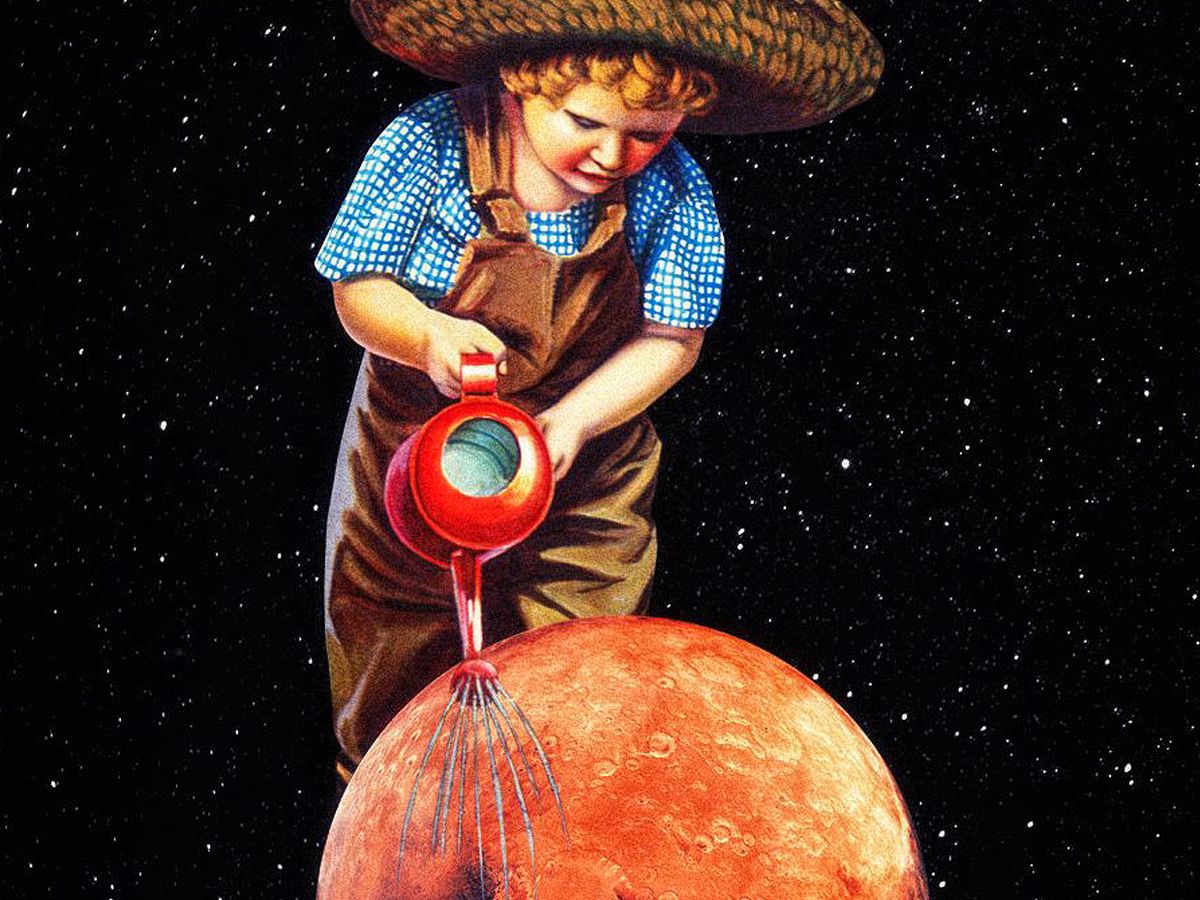We humans like to think big. And so we’re enthralled by the idea of terraforming other planets, notably Mars. We love the idea of remaking a hostile, barren planet into a comfortable, beautiful new world, capable of supporting and sustaining us with plentiful food and other necessities. And if we have to do it by bombarding the poles with thousands of nuclear bombs, hey, nobody said it would be easy, right?
This, of course, is not going to happen soon, or probably ever, on Mars, Venus, or any other planet. The only planetary-scale tinkering we’ve managed so far has resulted in the release of enormous amounts of carbon dioxide into our own atmosphere, messing up the home on which we originated and evolved. Proposals to “geoengineer” our way out of this fiasco, with vast, risky, and international efforts, will most likely come to nothing.
Hopefully, we won’t need them. Over the last decade or so, movements have sprung up and gained momentum naturally, driven by market forces, and they hold tremendous promise for mitigating climate change on Earth and maybe even for colonizing Mars someday. Three that I’m particularly excited about are indoor farming, the replacement of meat, and the construction of self-contained microclimates.
Stand in one of the many indoor farms now operating around the world and you’ll experience a bracing mix of the old and new. The buildings themselves are typically repurposed windowless structures such as old brick warehouses. But inside is the glow of LEDs, the tang of fertilizer, and the faint trickle of pumped water. From Beijing to Brooklyn, people can go to their local supermarkets and buy leafy greens grown just a few miles away. The plants are lit optimally by LEDs and grown in trays stacked high in air held at constant temperature and humidity. Roots dangling through holes in the trays are sprayed with water and nutrients. Water use is less than 10 percent of that used in conventional farming.
Meat production takes a terrible toll on our planet. One-quarter of all ice-free land is used for grazing and one-third of our cropland is used to produce feed for livestock, which have sixteen times the combined body mass of all humanity. The most successful mammals on Earth are cows, at least until we eat them. Vegetable-based meats promise a way out of this nightmare, and they’re starting to get commercial traction. Researchers are also figuring out how to grow “real” meat cells in vats, at a fraction of the environmental load of animal-based meats.
As an example of a microclimate space, consider the famous canopy along four blocks of Fremont Street in old Las Vegas. Built in 1994, it displays an overhead light show at night, but it also blocks out the hot sun during the day, enabling all sorts of outdoor businesses to flourish. Companies are taking that basic idea to the next level in enormous indoor spaces. The Orchard Terrace at the Gaylord National Resort and Convention Center, just south of Washington, D.C., for example, features a 19-story glass atrium so large it contains a small village with real trees and gardens. Visitors enjoy a pleasant outdoorlike space in both the depths of winter and in the oppressive heat of summer. As climate change makes life in some cities harsher, we’ll see more of these enclosed oases, particularly in the developed world.
When we finally settle Mars, we’ll do it not by nuking its poles but with advanced versions of these three contrivances. Nevertheless, the terraformers will get their wish: Should we manage to go there at scale, Mars will end up looking like Earth. But it will look like tomorrow’s Earth, not the archetypal arcadia of our dreams.
Rodney Brooks is the Panasonic Professor of Robotics (emeritus) at MIT, where he was director of the AI Lab and then CSAIL. He has been cofounder of iRobot, Rethink Robotics, and Robust AI, where he is currently CTO.



